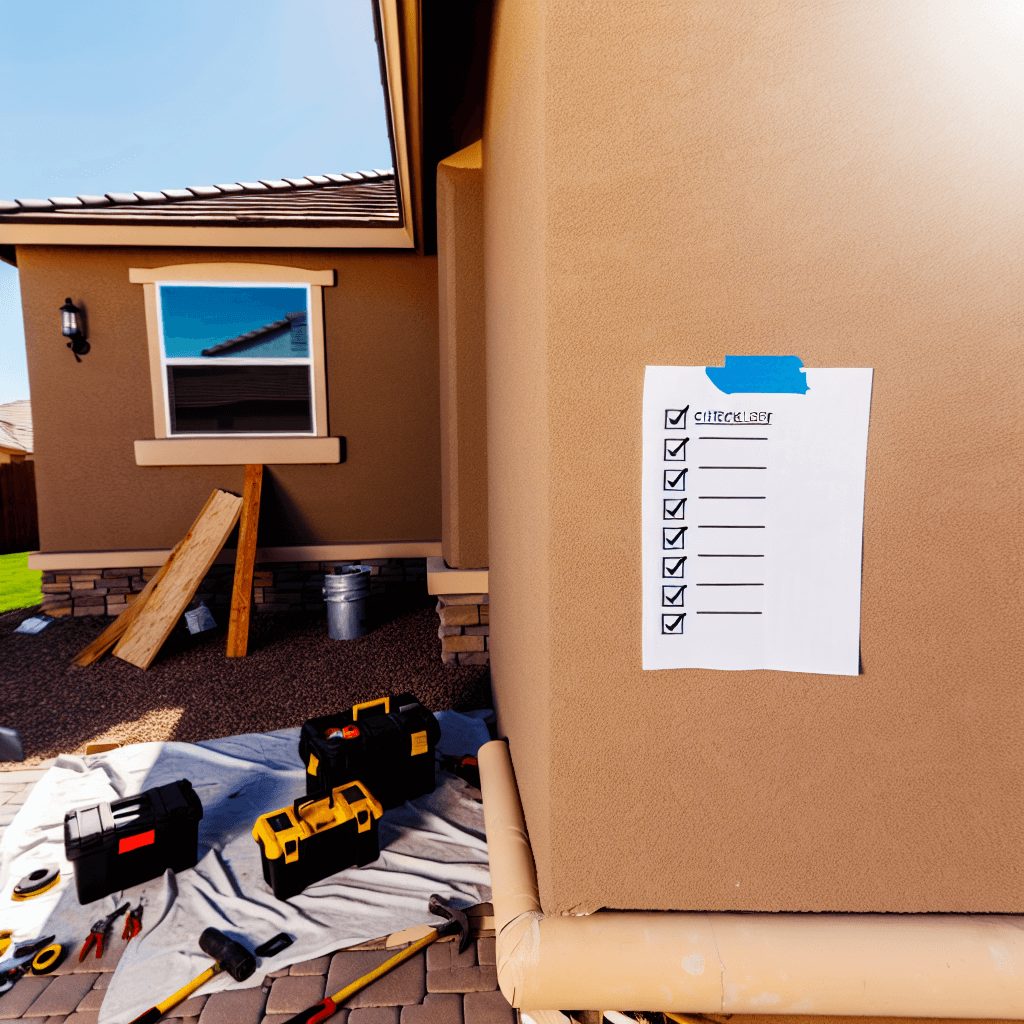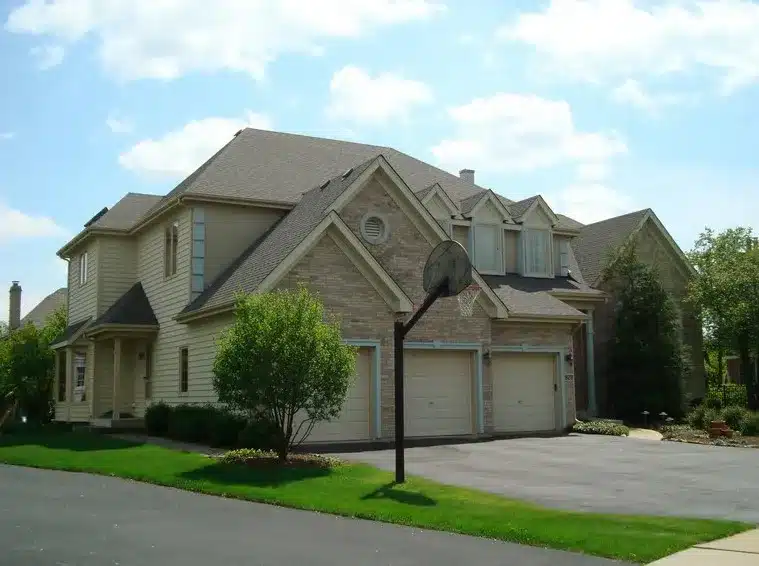• Understand the essentials: Learn how to create a comprehensive storm restoration checklist tailored for homeowners.
• Professional insights: Gain insights into why professional help is critical in ensuring thorough restoration after a storm.
• Stay connected: Keep updated with the latest news and projects by visiting our social media page.
Assessing Storm Impact: What to Look For
When the skies clear after a summer tempest in Hinsdale, IL, it’s crucial for homeowners to remain vigilant and assess the impact on their properties. Start outside by inspecting the roof for missing shingles or tiles, which can indicate potential leaks or structural vulnerability. Gutters and downspouts often bear the brunt of heavy rainfall and wind, so check for detachment or blockage that could lead to water damage. Lastly, don’t neglect windows; even minor cracks can grow and compromise the integrity of your home’s envelope.
Documentation: The First Step in Storm Recovery
Once you’ve identified the damages, the next step is thorough documentation—a fundamental part of the storm restoration checklist for homeowners. Capture clear photos of all affected areas, ensuring each image is date-stamped to support future insurance claims. In addition to photos, it’s wise to write down the specifics of what’s been compromised, as this can help in both claim filing and repair planning. Remember, detailed records today can lead to a smoother restoration process tomorrow.
Insurance and Immediate Measures
Your first action post assessment should be reaching out to your insurance company with your carefully documented damage report. Understanding your coverage helps set realistic expectations on restoration support. While awaiting insurance advice, you might need to initiate temporary protective measures to shield your home from further damage, such as covering breaches with sturdy tarps. Keep every receipt for these quick fixes, as they may be instrumental for reimbursement later on.
Professional Restoration: Securing Expert Help
In the wake of storm damage, it’s essential to bring in professionals who are well-versed in the nuances of restoration and reconstruction. A certified team will not only address the visible issues but also discern hidden problems that might escalate if left untreated. Homeowners in Hinsdale, IL, can turn to Owen Enterprises Inc., renowned for their expertise in storm restoration. By choosing qualified specialists, you ensure that every aspect of damage—from your roof down to your windows—is meticulously inspected and properly remedied.
Preparing for Future Storms: Beyond Immediate Repairs
The immediate aftermath of a storm is the most critical time for inspections and repairs, but preparation for future weather events is equally vital. Incorporate recommendations from experts like Owen Enterprises Inc. when considering upgrades or reinforcements for your home that could endure the next storm. Investing in fortified roofing systems, impact-resistant windows, and secure siding can significantly reduce damage in subsequent storms. These upgrades, along with regular maintenance checks, are proactive steps towards safeguarding your home against the unpredictability of Mother Nature.
Step 1: Inspect Your Property for Visible Storm Damage
Begin by safely examining your home for any obvious signs of damage from the storm. Look for missing shingles, damaged gutters, and broken windows. Be sure to check both the exterior and interior of your home.
Step 2: Document All Damage for Insurance Claims
Take photographs and make detailed notes of all damage. This documentation will be invaluable when filing an insurance claim to help ensure you receive appropriate coverage for the storm restoration.
Step 3: Reach Out to Your Insurance Company
Contact your insurance provider to report the damage and understand your coverage. Inquire about the process for filing a claim and any specific requirements or deadlines you must meet.
Step 4: Protect Your Home from Further Damage
If it’s safe to do so, make temporary repairs to prevent additional damage, like covering broken windows or holes in your roof with tarps. Keep receipts for any materials as they may be reimbursable through your insurance.
Step 5: Hire a Professional Storm Restoration Service
Enlist the services of a professional storm restoration company. Ensure they have experience in dealing with storm damage and are knowledgeable about local building codes in Hinsdale, IL.
Step 6: Safeguard Your Home Against Future Storms
Consider additional measures to protect your home from future incidents. Installing storm shutters, reinforcing your roof, and trimming overhanging tree branches can make a significant difference.
Step 7: Create an Emergency Readiness Plan
Formulate an emergency preparedness plan that includes a safety checklist, an emergency contact list, and an evacuation strategy in case future storms necessitate leaving your home.
Step 8: Review and Update Your Home Insurance
Lastly, re-evaluate your home insurance policy. Make sure you’re adequately covered for storm damage based on your recent experience, and adjust your policy as necessary for future peace of mind.
Common DIY Mistakes to Avoid in Storm Restoration
When a storm passes, the urge to quickly fix the visible damage to your home can lead to hastily made decisions. However, this well-meant DIY spirit can sometimes backfire, turning simple fixes into costly mistakes. Here, we outline some of the most common missteps homeowners make in the aftermath of a storm, and how to avoid them.
Mistake 1: Ignoring Safety Procedures
Often, homeowners rush to inspect their property without proper safety gear or consideration for potential hazards. Always wear sturdy footwear and gloves to protect from sharp debris, and avoid walking on wet surfaces that could lead to slips or falls.
Mistake 2: Poor Damage Documentation
Some may underestimate the importance of detailed documentation, resulting in insufficient evidence for insurance claims. Take your time to photograph every area of damage and write comprehensive notes. Prompt and precise documentation avoids disputes with insurance companies.
Mistake 3: Delaying Contact with Insurance
Waiting too long to contact your insurance provider can delay the claims process and potentially lead to further property damage. Reach out to your insurer as soon as possible to report damage and get the ball rolling on your claim.
Mistake 4: Quick Fixes that Compromise Quality
In an attempt to swiftly protect their home from further damage, homeowners might apply quick fixes that don’t hold up. Use quality materials and techniques for temporary repairs to ensure lasting protection until professional help arrives.
Mistake 5: Going It Alone When Professional Help Is Needed
Some may attempt to handle complex repairs on their own, risking improper restoration that could cause problems down the line. Recognize when damage requires professional expertise, particularly for structural and electrical issues.
Mistake 6: Overlooking the Future
Focusing only on current damage without considering future protection is a common oversight. Implement preventative measures like storm shutters and roof reinforcements to mitigate the impact of the next storm.
Mistake 7: Failing to Plan for the Next Emergency
Post-storm restoration is a prime time to update your emergency plan. Ensure you have a clear and updated plan in place to maintain the safety and readiness of your home and family.
Mistake 8: Neglecting Insurance Policy Updates
Finally, not updating your homeowner’s insurance to reflect recent changes can leave you vulnerable. After repairs, review and update your insurance policy to ensure it aligns with the current state of your home and potential future needs.
Emergency Protocols: Crafting Your Plan
Having a well-thought-out emergency plan can make all the difference when storm season hits. It’s crucial to maintain a readily accessible safety checklist, which includes emergency contact numbers, a list of safe spaces in your home, and instructions for turning off utilities. Being prepared allows homeowners to act swiftly, ensuring the well-being of all household members during stressful weather events.
Ensuring Coverage: Insurance Policy Checkup
Post-storm, it’s a smart move to revisit your homeowner’s insurance policy. Make sure it provides adequate coverage for storm-related damages, reflecting the true value of your home and its contents. Proactive adjustments to your policy can provide peace of mind, knowing you’re protected financially against future storms.






